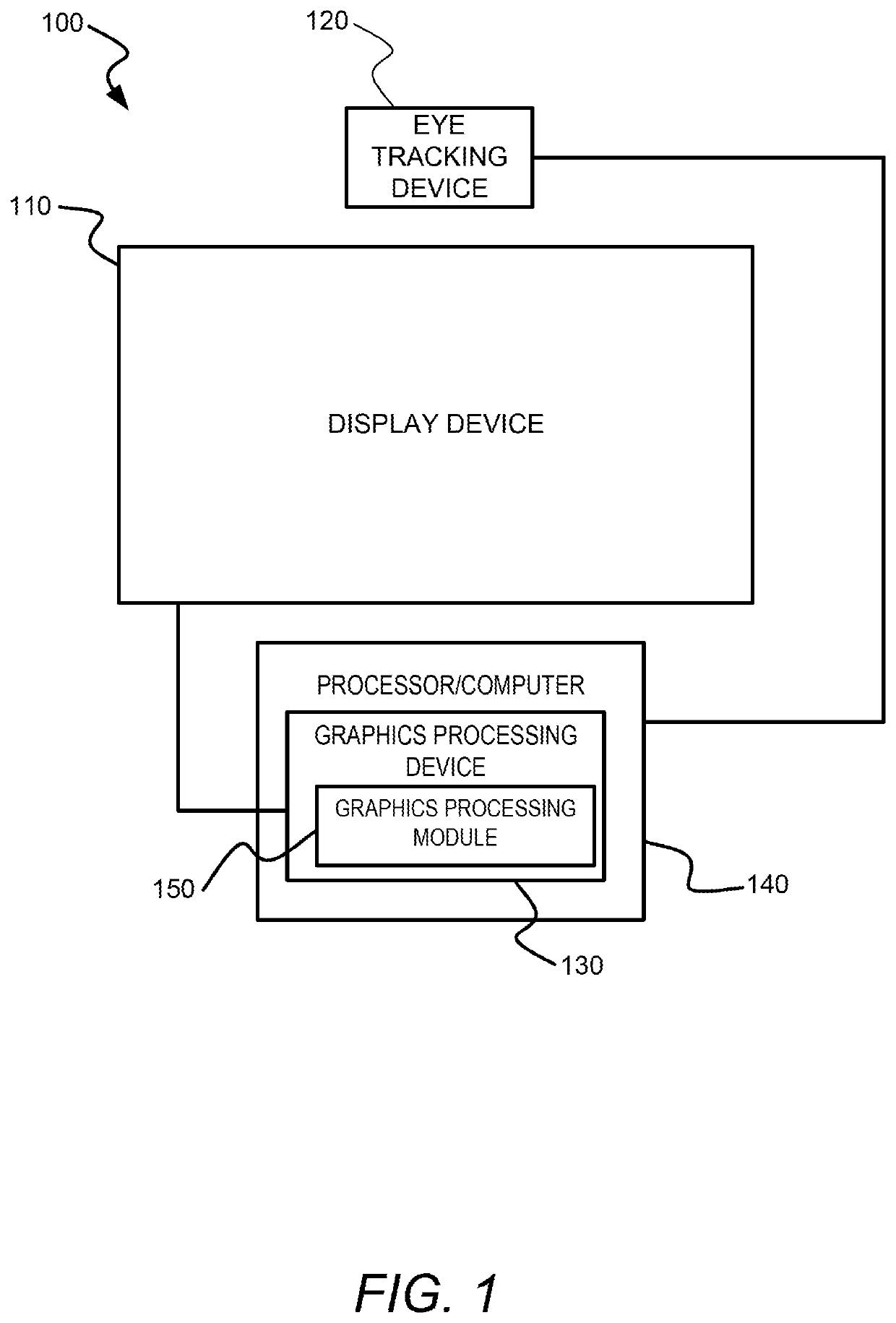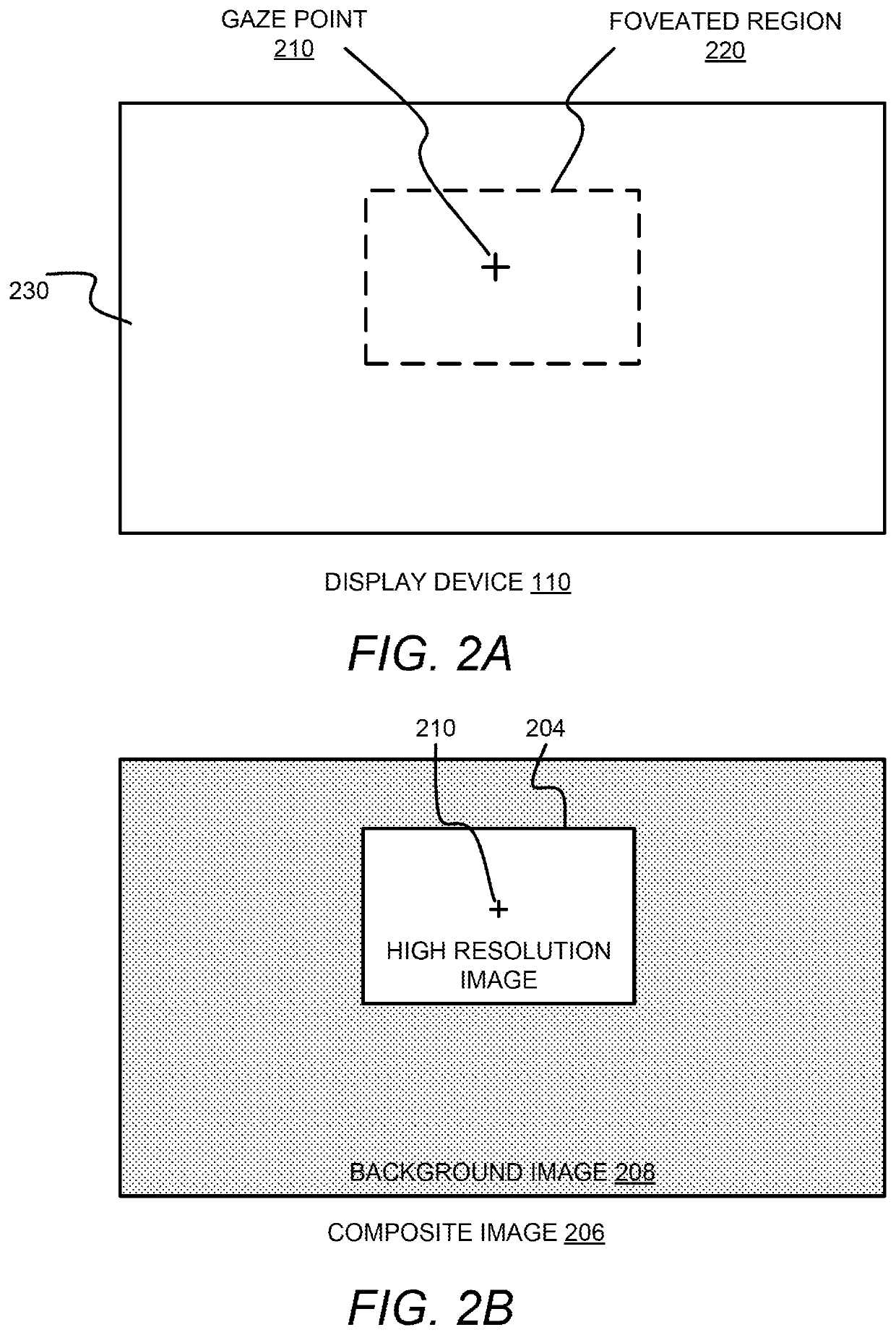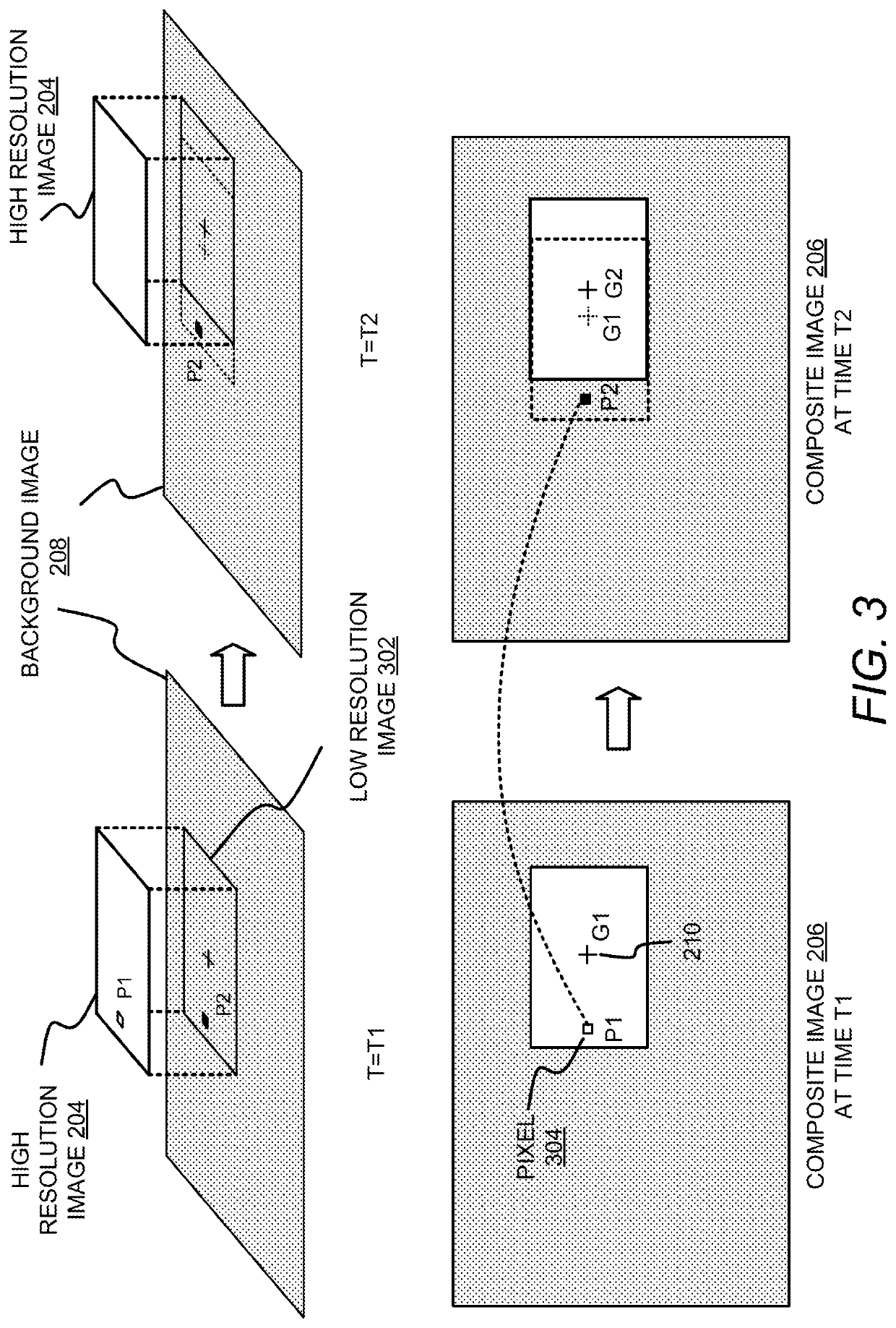Reducing aliasing artifacts in foveated rendering using cross-resolution modulation
a technology of cross-resolution modulation and aliasing artifacts, which is applied in the direction of static indicating devices, instruments, and image enhancement, etc., can solve the problems of limited processing power and memory capacity of graphics processing devices performing rendering, rendering scenes, especially real-time rendering, and computationally expensive processes, etc., to reduce aliasing artifacts, reduce aliasing artifacts, and reduce aliasing artifacts
- Summary
- Abstract
- Description
- Claims
- Application Information
AI Technical Summary
Benefits of technology
Problems solved by technology
Method used
Image
Examples
Embodiment Construction
[0016]Embodiments for reducing temporal aliasing artifacts in foveated rendering are disclosed. In an example, a graphics processing device implements the foveated rendering by generating a high resolution foreground image for a foveated region containing the gaze point of a user on a display device, and a background image having a lower resolution for the non-foveated region. The background image also contains an area that corresponds to the high resolution image, which is referred to herein as a “low resolution image”. The graphics processing device evaluates a pixel in the high resolution image and determines a sample in the low resolution image that corresponds to the pixel in the high resolution image by mapping the coordinates of the pixel in the high resolution image to the low resolution image. The sample might be a pixel of the low resolution image if the pixel of the high resolution image is mapped to a pixel of the low resolution image. If the pixel of the high resolution...
PUM
 Login to View More
Login to View More Abstract
Description
Claims
Application Information
 Login to View More
Login to View More - R&D
- Intellectual Property
- Life Sciences
- Materials
- Tech Scout
- Unparalleled Data Quality
- Higher Quality Content
- 60% Fewer Hallucinations
Browse by: Latest US Patents, China's latest patents, Technical Efficacy Thesaurus, Application Domain, Technology Topic, Popular Technical Reports.
© 2025 PatSnap. All rights reserved.Legal|Privacy policy|Modern Slavery Act Transparency Statement|Sitemap|About US| Contact US: help@patsnap.com



